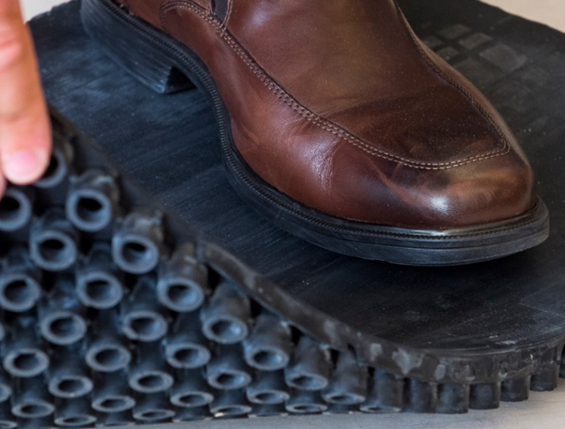FALLS IN OLDER ADULTS
Falls are the most common cause of injuries and injury-related deaths across the lifespan. Falls can be especially devastating for older adults, causing over 90% of hip fractures, and up to 80% of head injuries in this population. Approximately 20% of hip fracture patients die within a year, and 50% will not return to their pre-fracture level of mobility and independence.
We use innovative approaches to improve our understanding of the cause and prevention of falls and fall-related injuries in older adults. We conduct laboratory experiments on the dynamics of fall initiation, descent and impact. Working with partners in long-term care, we capture and analyze video footage of real-life falls. We use this knowledge to develop and test the effectiveness of interventions.
Video Capture of Falls

There is a lack of objective evidence on "how" and "why" falls occur in older adults, and this is a barrier to fall prevention.
This project involves the collection and analysis of video footage of real-life falls experienced by older adults residing in two partnering long-term care homes in the Vancouver area. The videos are analyzed with structured questionnaires and by digitizing the time-varying movements of the body. Specific areas of focus include the causes of imbalance and activities leading to the fall, and the factors that influence risk for injury during falls.
Protective Clothing

"Hip protectors" are a type of protective clothing designed to cushion a fall and prevent hip fracture. Our research examines the biomechanical and clinical value of hip protectors, and barriers and facilitators to use of hip protectors.
To improve the performance and market regulation of hip protectors, we worked with the Canadian Standards Association (CSA) in a multi-disciplinary committee to develop a standard (CSA Z325:20) for biomechanical testing of hip protectors. The standard guides users in the selection of hip protectors, and industry in the design, evaluation and marketing of hip protectors.
In the area of user acceptance, we worked with partners in the Fraser Health region of British Columbia to show that a hip protector implementation strategy resulted in 60% of residents of 14 long-term homes care wearing hip protectors on a regular basis. In additional studies, we showed that individuals who wore hip protectors had a 3-fold lower risk for hip fracture in the event of a fall. Building on this success, we are working to develop implementation strategies to increase the use of hip protectors in Ontario. In additional studies, we are designing and testing unobtrusive head gear (e.g., padded hats and wigs) for protecting the brain during falls that result in head impact.
Key publications:
Hip Protectors. CSA Z325:20. CSA Group; 2020. https://www.csagroup.org/store/product/2427790/
Compliant Flooring

Safe movement environments can promote mobility and prevent injuries from falls. An obvious strategy for high-risk environments, such as long-term care and hospitals, is to reduce the stiffness of the floor. But how much reduction in stiffness is required to prevent injuries?
Through a 4-year prospective randomized study, we examined how falls and injuries were affected by the installation of a specific type of compliant flooring. We found that falls were not increased by compliant flooring. However, there was no difference in the risk for injury when falling on compliant flooring versus control (rigid) flooring. The reasons may relate to the high use of hip protectors in the long-term care site that we studied, or the need for compliant flooring to be even softer in order to prevent injuries.
Key publications:
Mackey DC, Lachance CC, Wang PT, Feldman F, Laing AC, Leung PM, Hu XJ & Robinovitch SN. The Flooring for Injury Prevention (FLIP) Study of compliant flooring for the prevention of fall-related injuries in long-term care: A randomized trial. PLoS Med, 16, e1002843, 2019.
Wearable Fall Event Sensors

Unobtrusive wearable sensors have the potential to detect falls for care delivery, and provide valuable information on the cause of falls.
We have combined miniature sensors with custom-designed data analysis algorithms to create wearable fall recorders that can accurately detect falls, and record key characteristics associated with the initiation, descent, and impact stages of falls. We found that the accuracy of the system in detecting and classifying the fall depends on the number and location of sensors. Furthermore, machine learning algorithms (or hybrid approaches) provide better accuracy that threshold-based strategies for detecting and classifying falls.

